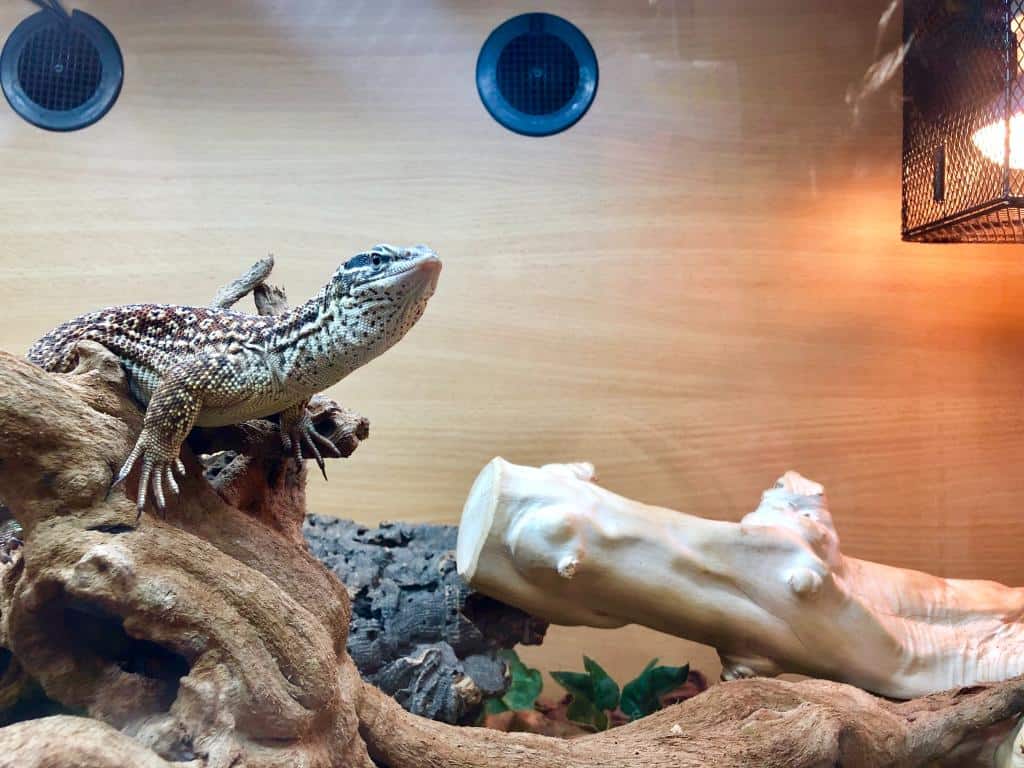Cold Weather and Exotic Pets: Do You Need to Adjust Their Habitat This Fall?

There’s something delicious about the feeling of fall in the air. We humans start pulling out our sweaters, even here in Austin, TX. The weather change may be subtle, but it’s there. For those of us who share our homes with exotic pets, this shift in weather is an excellent time to check in on their comfort levels.
Exotic pet care in the fall involves making sure pets stay warm, safe, and stable as the temperatures drop—and the heaters turn on. Here’s what the team at BEEVET Animal Hospital wants you to know.
For Reptiles, Warmth is Life—Literally
Reptiles depend on heat to survive. They can’t create their own body heat, so cooler fall nights can be tricky. Especially if you’re leaving the windows open to soak in some of that (finally!) crisp air.
To meet your reptile’s heating needs in the fall, you may need to:
- Check your pet’s basking lamps
- Swap bulbs out for higher wattage lights
- Adjust the ceramic heaters to a higher setting
Make sure you use an accurate, reliable thermometer and hygrometer to keep tabs on the heat and humidity levels inside the enclosure. If you’re unsure what the best temperature is for your species of reptile, consult with an exotic pet veterinarian (like us!)
Feathered Friends Need Cozy Spaces, Too
Birds have feathers to help them stay warm, but a blast of dry air from your heater in the morning or a crisp draft from the window in the afternoon can ruffle them.
The best bird warmth tips are simple:
- Keep cages away from windows or exterior doors
- Cover cages at night for warmth and darkness (with plenty of space for air to circulate)
- Add a safe, heated perch for birds accustomed to hotter, more humid weather, like tropical birds
With the right fall bird care, you can enjoy happy chirps all season long. Not sure what the best temperature is for your feathered friend? Generally, most birds do best at temperatures between 65°F and 80°F.
If you’re unsure about whether the home is too cold—or hot—for your avian friend, reach out to your exotic pet veterinarian.
Small, Sensitive Noses and Toes-es
Small mammals like sugar gliders, chinchillas, gerbils, guinea pigs, and hamsters can be surprisingly sensitive to cooler air. They might look cozy and warm in their fur, but just one draft from an open window or exterior door can quickly drop the temperature in their cages.
Chinchillas do best in cooler conditions (50°F to 60°F), and they should be shielded from hot blasts from the heater.
For hamsters, gerbils, and guinea pigs, on the other hand, anything below 60°F is dangerously cold. When these pets get too cold, they may slip into a hibernation-like state—torpor—which is dangerous and can even be fatal.
The key to fall pet safety for these small mammals is to keep their enclosures in a draft-free area of the home. Offer deep bedding for burrowing and make sure the temperatures in the room and in the enclosure stay between 65°F and 75°F.
For sugar gliders, warmer temperatures are important (75°F to 85°F is their sweet spot).
A Comfortable Season for Every Creature
No matter your best efforts, the cold can sometimes affect your exotic pet and cause symptoms like lethargy, loss of appetite, and sluggishness. If you think the crisp fall air has negatively affected your exotic pet, reach out to our skilled team at BEEVET Animal Hospital.
We’ll work to help your feathered, scaly, or furry friend feel better. Call us at (512) 263-9292 to schedule an appointment!
